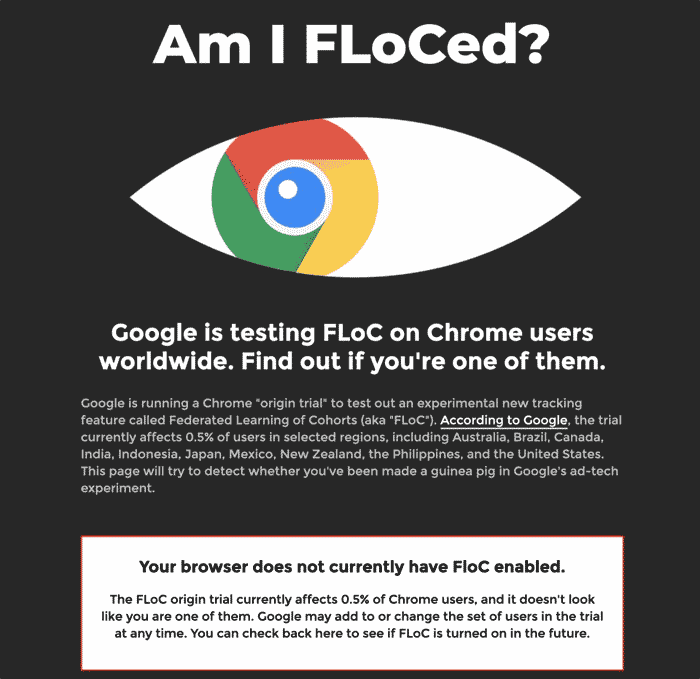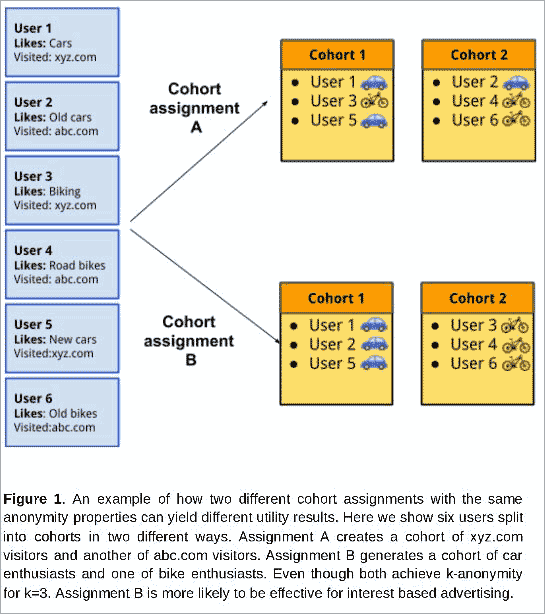Google Chrome's dropping of support for 3rd party cookies accelerated the rush to find new ad targeting options that improve privacy while delivering ads that are relevant to visitors. Google's chosen approach has been Federated Learning of Cohorts, or FLoC for short.
Google, the largest player in the online ad ecosystem, has a great deal of gravitas to leverage, and the general consensus is that many or most publishers and brands will follow their lead.
However, the approach is not without critics, and recently major adblock vendors have declared they are planning to block ads using Google's FLoC approach. Thus, publishers need to understand FLoC and it's alternatives, to navigate towards their best path forward for sustainable revenues and CPMs rates.
Table of Contents: FLoC Questions and Answers for Media Publishers
- What is Google FLoC?
- What are the Higher Level Principles of FLoC?
- How does FLoC Work?
- What is Google's Privacy Sandbox?
- What are the 5 Browser API's in the Privacy Sandbox?
- What does FLoC Mean for Media Publishers?
- Do AdBlockers Disrupt FLoC?
- How Publishers can Build a Can't-Lose Strategy
What is Google FLoC?
FLoC is an alternative to using 3rd party cookies to target ads, by anonymously grouping users into cohorts, a group of individuals having similar interests. With FLoC, Google is building a new browser standard to anonymously study user behavior leveraging machine learning to avoid the need to track and share individual user behaviors.
FLoC, or the Federated Learning of Cohorts, is a privacy-first solution. By clustering large datasets derived from similarly large user bases, it capably measures interest groups while keeping individual data source accounts anonymized.
Google is currently testing FLoC on Chrome users around the world. FLoC and Google targeting shift has received mixed reviews from many corners of the ecosystem, yet most agree because it is coming from Google, there's a good chance many will just accept the new reality driven by the dominant force in the system.

What are the Higher Level Principles for FLoC?
As detailed in a white paper from Google Research, the following are the higher level principles guiding FLoC algorithm development:
- The cohort ID should prevent individual cross-site tracking.
- A cohort should consist of users with similar browsing behavior.
- Cohort assignments should be unsupervised algorithms, since each provider has their own optimization function.
- A cohort assignment should limit the use of magic numbers. That is, it's parameter choice should be clearly and easily explained.
- Computing an individual's cohort should be simple. This allows for it to be implemented in a browser with low system requirements.
How Does FLoC Work?
Google's FLoC algorithms attempt to balance Utility vs Privacy. The initiative is geared towards a greater privacy standard, but if the approach has no utility to drive targeting value, it's all for naught. Their approach to device-centric and interest-based. By leveraging the browser, user information isn’t spread across the web as part of the collection process.
Google reports early FLoC tests simulating different transactions paint a promising picture: According to Google's blog, FLoC may deliver as much as 95 percent of per-dollar conversions spent when analyzed against traditional, cookie-based ad methods.
For a technical view of FLoC algorithm testing and their use of SimHash, this whitepaper shares the results and data used to test the efficacy of FLoC. They looked at hypothetical scenarios and logic, then tested algorithms against large data sets on the web, including the Million Song dataset, MovieLens 25M dataset, and a collection of publisher URLs from 7 days of Google Display Network.

This, of course, leads to the big question: Will FLoC actually be private? Google asserts that it will be, as FLoC will be based upon a ‘self-contained’ ad environment which protects user information without barring meaningful brand connections entirely. Google dubs it: The Privacy Sandbox
What is Google's Privacy Sandbox?
Google's Privacy Sandbox is a browser standards-based initiative to improve overall user privacy without 3rd party cookies, yet supporting core advertising functions. Within a browser’s ‘sandbox,’ websites can still request browser-related details, legitimately. As of early 2021, the Privacy Sandbox is still in a state of testing and collecting feedback from advertisers, publishers, and consumers.
Google has a huge stake in the ad ecosystem, and the privacy sandbox is a way to continue digital ad functions like targeting, conversion, attribution, and reporting, without using 3rd party cookies. The Privacy Sandbox maintains a predefined ‘privacy budget’ to assure each user’s comfort and data integrity. While websites can receive a little information, it remains just that: impersonal.
What are the 5 Browser API's in Google's Privacy Sandbox?
- FLoC: Facilitates ad targeting using groups of visitors together in ‘cohorts’ or ‘flocks', rather than tracking individual behavior and history.
- Trust Token: An alternative to CAPTCHA, that uses cryptographic tokens to help detect and prevent fraud through the use of a 'Privacy Pass'.
- Privacy Budget: This API limits the amount of a user's data a website can request from the sandbox. It also helps prevent Browser Fingerprinting.
- Conversion Measurement: This API collects and shares critical conversion metrics such as product purchases or landing page visits resulting from an ad click.
- Remarketing (Called FLEDGE, formerly TURTLEDOVE): Google's (third) attempt to support remarketing campaigns in a more private way. FLEDGE stands for First Locally-Executed Decision over Groups Experiment.
What does FLoC Mean for Publishers?
As Google continues to test FLoC, there are some clear takeaways for publishers. Recognize the cookie is dead, that Google's solutions are still evolving and other methods such as UID may hold value for publishers, that the value of first-party data grows more urgently, and that Chrome doesn't represent your entire audience.
- Death of 3rd Party Cookies. FLoC is further evidence that Google is committed to dropping support for individual behavioral targeting and 3rd party cookies. Publishers should pay close attention to the evolution of Google's initiatives, as well as other alternatives to ad targeting such as Identity Resolution. (See also: How pubs are prepping for the 'death of cookies')
- Google Competitive Advantage? There are concerns both by vendors and regulatory bodies that Google's Privacy Sandbox is set to give Chrome a competitive advantage. Additionally, the changes can impact the competition between Google AdX and other exchanges, weakening competition, which can affect the options available to publishers and advertisers.
- Still Evolving. Google states that the use of FLoC cohorts will capture 95% of the conversion value currently delivered via 3rd party cookies. However, many parts of the Privacy Sandbox are still evolving and need further testing of how it handles conversion measurement, frequency capping, retargeting, attribution, and more.
- Grow First Party Data. With the loss of 3rd party cookies, the value and urgency to grow 1st party data increases greatly. The value of first-party data can help bolster CPM rates. Registration walls and growing email signups is worth consideration to be as prepared as possible for an unknown ad future. Admiral VRM can help with regwalls, site registrations, and growing first-party data.
- Don't Forget Non-Chrome Audiences. Publishers should also recognize that, though a gorilla, Chrome does not have ALL of the market, and you can still leverage other approaches for non-Chrome users.
The success of FLoC is anyone’s assumption, for right now: Google Chrome will introduce a Settings control for users wishing to opt out of FLoC-based features, this April. In the meantime, the Privacy Sandbox will expand globally—further rolling out to ad testers, all the while.
As we move towards a new, curious world of interest-group-based advertisement and the death of third-party cookies, a number of questions arise. For publishers, core audiences are always a concern. Will CPMs hold up in a FLoC system? Will interest groups be enough to maintain current strategies?
Can AdBlockers Block FLoC?
Yes, adblock vendors including Brave browser and DuckDuckGo have both announced intentions to block FLoC. AdGuard tweeted that they are set to block FLoC, uBlock Origin is as well, and even WordPress announced they are treating FLoC as a security concern.
AdGuard now blocks Google FLoC.
— AdGuard (@AdGuard) April 11, 2021
Google created a new tech called FLoC that is supposed to replace third-party cookies for behavioral tracking and baked it into Chrome.
But if you have a Tracking Protection filter enabled in your AdGuard, you are safe.https://t.co/vaPhuugAYI
Consent, First-Party Data, and Revenue Diversification
Publishers are besieged by proposals, new standards, experiments, Google initiatives, User Identity options, cryptographic solutions, and regulatory concerns come from a dozen different bodies.
Step back and ask: What can we count on?
Answer: Your talent and skill at producing quality content, and your visitors interest and desire for more.
Three things publishers can do to build a can't-lose strategy:
1) Develop a consent-first approach to your visitors.
Treat them like the long-term revenue drivers they are. Without your users, all the FLoC, header bidding, UID talk is useless. Build sustainable consent-based relationships with your users. They should see it in your actions, and hear it in your language and offers. You can start by making sure you are square with GDPR and CCPA by leveraging Admiral's consent management module.
2) Commit to growing first-party data now.
Not soon, not 'one day', this week. Talk with Admiral about a schedule for running registration walls or email subscription offers to gather as many direct touchpoints as possible with your visitors. The value of that data will only multiply over time, for ad targeting, newsletter touches, or growing social media shares. Even intermittent reg wall engagements can boost signups rapidly to grow first-party data.
3) Take charge of more of your revenue options with paid subscriptions, ad-free subs, and recovering lost adblock revenue.
With Admiral's single tag, you can turn on modules to offer smart paywalls and ad-free subscriptions today, which can reach 20X the expected ad revenue for those visitors. Additionally, in less than 24 hours, Admiral can start unlocking your adblock users so they begin adding revenue to your bottom line again. Many visitors are willing to support their favorite sites, if they are just asked. Admiral makes that very easy.
All of the steps are push-button simple with Admiral Visitor Relationship Management (VRM) solution. One tag, installs in minutes. one consistent visitor experience, across the visitor revenue journey. Request a demo today.





